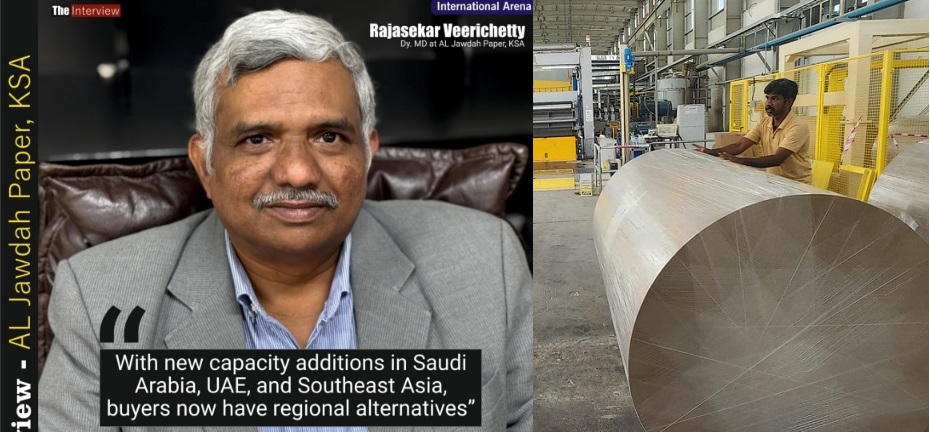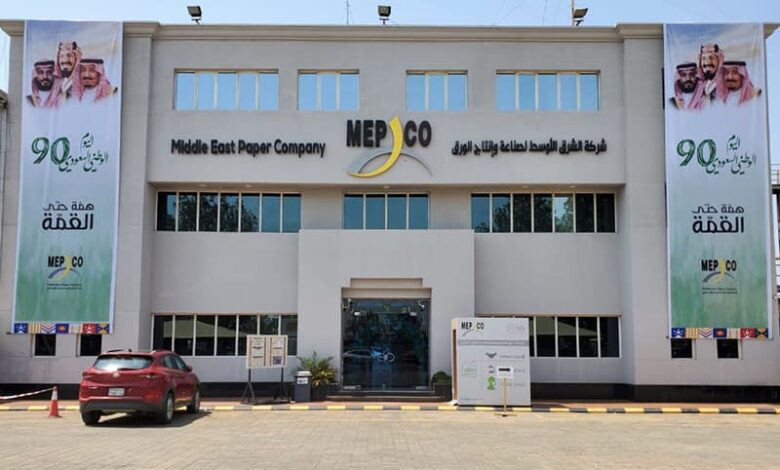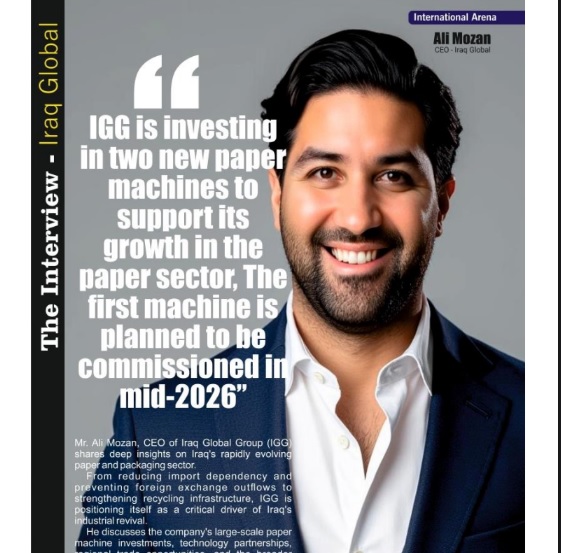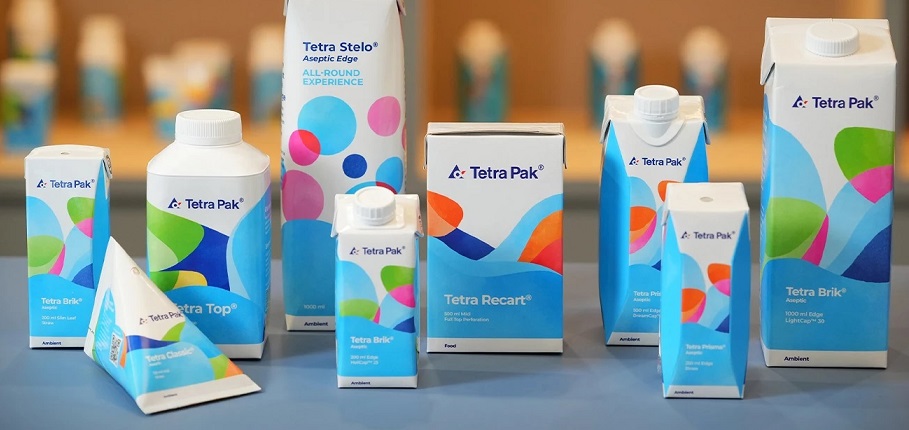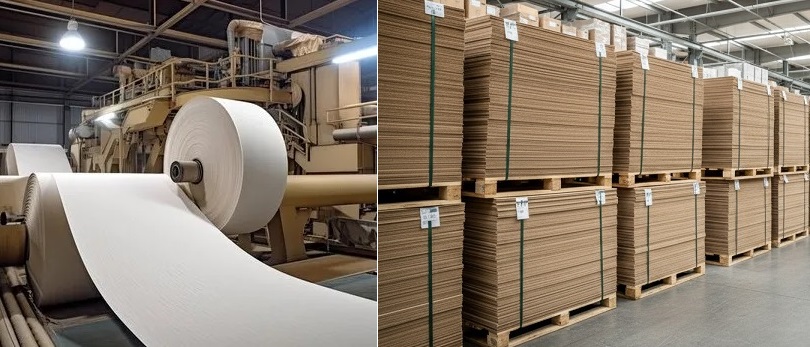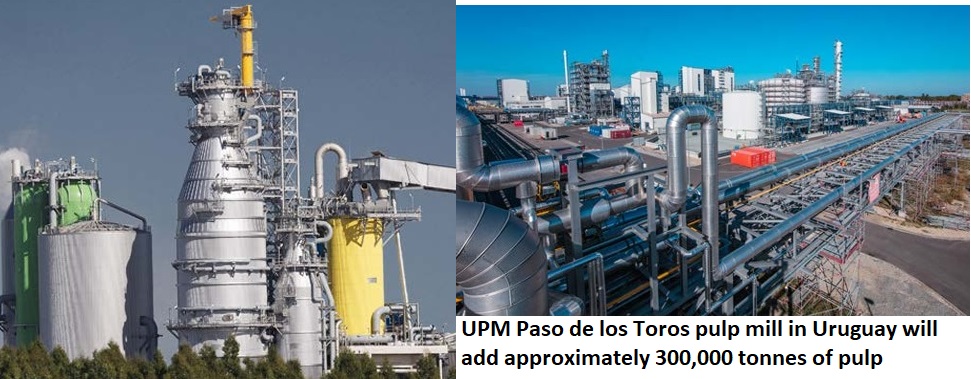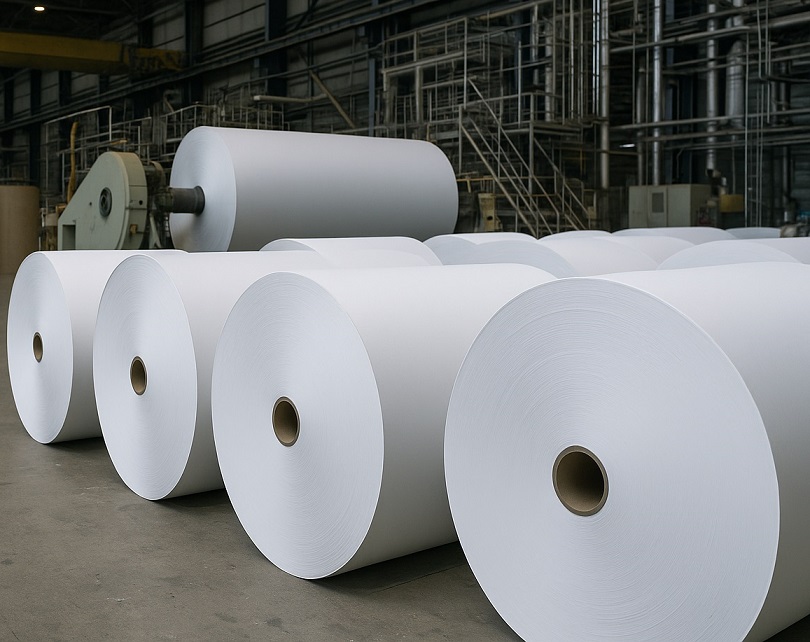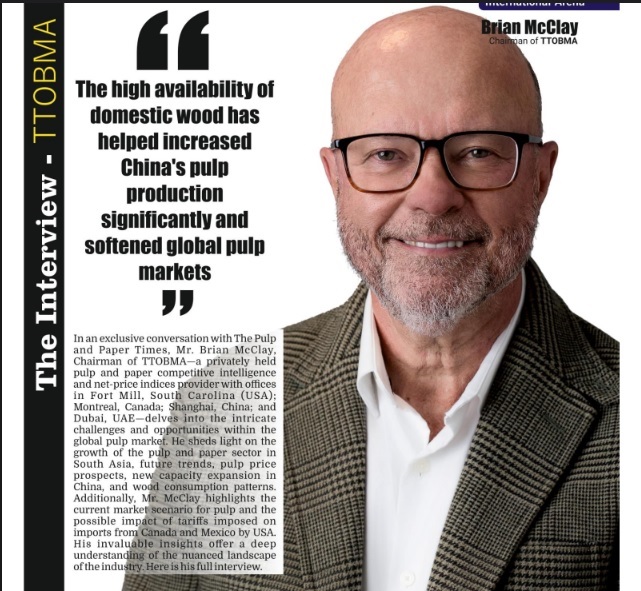ERPA: Indian market is now the most important export market for Europe
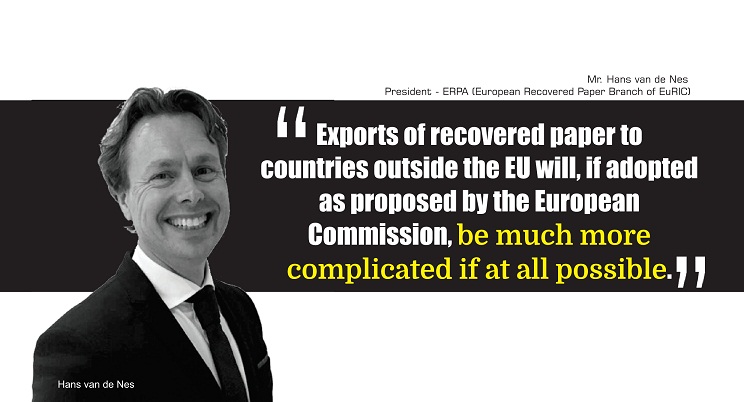
ERPA: Indian market is now the most important export market for Europe
-EuRIC and more specifically our recovered paper branch ERPA is willing to assist and help with a strategy to increase the recovery rate in India.
-10 percent graphical paper is definitely lost in favor of packaging grades.
Recently, The Pulp and Paper Times got the opportunity to interact with Mr. Hans van de Nes, President - ERPA (European Recovered Paper Branch of EuRIC) over the various issue related to recovered paper export, collection, and proposed EU's ban on the export of recovered paper. Here is his full Interview:
April 2022 | The Pulp and Paper Times:
Q: Please give us a brief Introduction about The European Recovered Paper Branch (ERPA)
ERPA is the recovered paper branch of EuRIC, the European Recycling Industries’ Confederation. ERPA Members are national recovered paper federations from different European Union countries representing the interests of companies involved in the collection, processing, recycling, transportation, and trade of recovered paper.
Q: Please briefly describe ERPA’s main objectives & issues particularly for the recovered paper?
ERPA’s main objectives are to monitor and analyse at EU level all legal, environmental, economic, and technical issues relating to the recovery, processing, recycling, and transportation of recovered paper. Additionally, ERPA connects the most national recovered paper associations in Europe and ensures a proper representation of the European recovered paper sector to the European institutions and to liaise with relevant associations inside and outside the EU.
Q: How does ERPA analyze the current waste paper scenario, especially under the shadow of the Ukraine-Russia war and COVID pandemic? Also, the Price of US OCC has already been touching $ 400 MT to Indian Port, do we see some more spike in prices?
We don’t know, there are too many factors that could lead to a higher or lower price level.
Q: With the ban on imported waste paper in China effective from January 2021, how has the world been affected by this major shift?
The European demand for recovered paper was very strong in 2021. The CEPI countries utilized 50,5 million tons of recovered paper, the highest level ever. The main driver was the German market. The German mills imported more than 5 million tons in 2021. China is still an important player on the world market, but the Indian market is now the most important export market for Europe.
Q: The EU Commission has issued the proposal for the new legislation on the export of waste (Proposal for a regulation by the European Parliament and the Council on shipments of waste), which will be also ruling the exports of waste paper. This will mean that European paper mills will have access to unlimited supplies of very cheap waste paper. How will this regulation be going to affect the paper mill outside and Recovered paper recyclers inside Europe?
The proposal to revise the Waste Shipment Regulation is still in the legislative process. At this point, nothing can be said with certainty. However, exports of recovered paper to countries outside the EU will, if adopted as proposed by the European Commission, be much more complicated if at all possible.
Q: India is emerging out as the next big consumer of imported recovered fibers and it could be the next potential export market for European and American suppliers. How does ERPA think to give a sustainable solution to meet the increasing requirement of imported recovered fibers by Indian Paper Mills keeping the contamination level below one percent?
Separate collection is a very important first step, then serious quality control during the cleaning, sorting, and bailing process. Finally auditing the bales before shipment.
Q: India is emerging with its paper production massively. According to a report, there will be a new investment of INR 90,000 Crores. in the paper industry by 2030. But, despite this, India has a very low recovery rate of waste paper. It is almost hovering around 26 percent and per capita consumption stands at 13 Kg per person per year. How does ERPA suggest any strategy in the Indian context for increasing the recovery rate?
India is famous for its scientific approach of logistical challenges. The collection of waste paper in the Indian cities is a logistical challenge but possible. We have already seen fantastic results in some areas. The Indian paper industry needs a strong recycling sector to meet the growing demand for recovered paper. EuRIC and more specifically our recovered paper branch ERPA is willing to assist and help with a strategy to increase the recovery rate in India.
Q: How much does ERPA think that Indian recyclers follow the compliances of recycling parameters compared to European recycling companies? Any suggestions?
The Indian paper industry needs the Indian recyclers. When the Indian Paper Industry pays the right prices for the recovered paper, the recyclers are able to collect and process much more (domestic) Indian recovered paper. The Indian society should reward their status and there should be a higher appreciation of the Indian recyclers. This sector should grow hand in hand with the Indian Paper industry and become an important recycling industry in India. This will make India more independent from American or European recovered paper imports.
Q: In an Interview with Bureau of International Recycling (BIR), Paper Division President Mr. Jean-Luc Petithuguenin said that EU and US capacities are not consuming the same paper & board that the one being shipped to India and Asia, What should one understand with this?
We don’t know.
Q: COVID pandemic has crippled the demand of Writing printing (WPP) and graphic paper by almost 40 to 50 percent in the last two years. Which means less papers have been added in the recovered paper circular economy? Please correct us if we are wrong, can we outline the reduced consumption of WPP as one of the reasons behind the skyrocketing price of OCC? What is ERPA’s stand on this?
According to the official CEPI statistics there was an increase in the utilization of recovered paper. The collection figures will show an increase of the total collection. The strongly reduced production and consumption graphic paper was a surprise for many buyers and indeed caused huge prices. But it was also caused by the pandemic measures, people stayed at home and shops were closed. People ordered food at home and shopped online and there was not much advertising during the pandemic. The paper bin was stuffed with packaging grades and hardly with graphical paper. The yield of graphical paper in the sorting lines dramatically decreased from the traditional 65% to 40 % during the pandemic. Now the yield stabilizes around 50 %. This means that 10 % graphical paper is definitely lost in favor of packaging grades. For insiders this was not a surprise, “what is not produced can’t be collected and recycled”.
Q: New capacities coming up on stream across Europe - including in France, Germany, Italy, and Turkey - will amount to almost 4 million tons of annual additional output potential over the next three years. Does EURIC think that the export level of recovered paper to South & South East Asia will register a ‘drop’ from Europe?
We have already seen a drop of the export. A typical exporting country like Italy decreased its export from 1.85 million tons to 1,28 million tons which is a decrease of 30 % in 2021 compared to 2020. This trend will continue and, in some regions, there already is a dramatic drop of export, but in other regions in Europe export will remain necessary
Q: What is the future of Recovered paper Trade ERPA do see in the next five years, and its growth?
There is still a growth in the collection and processing of recovered paper. The biggest challenge is the increase of volumes of packaging grades but a stabilization of the processed tonnage (due to a different composition of packaging compared to graphical paper). We see a borderless Europe for recovered paper grades which meet the quality criteria for end of waste and an increased intra communitarian trade of recovered paper. The end of waste status of recovered paper will increase the possibilities for the traders to cross all the European borders in order to fulfill the increasing demand of the European paper industry. The prices for transport will be crucial for the decision to sell the material in Europe or overseas. There will be a balance over 5 years between supply and demand. On the collection and supply side we see a consolidation and only specialists with market intelligence, financial reserves and a huge network will be able fulfill the needs of the customers.
Q: In the context of Russia-Ukraine clash and followed by various bans (imports and exports) by many countries, the energy prices are touching new heights in Europe & USA. As the paper industries are highly energy intensive, What impact does EURIC see on Paper Production and Paper Selling by American & European Paper Mills?
The effect of the high energy, transport, chemical and (secondary) raw materials will have a major impact on the profitability of the American and European Mills. Will they be able to transform the higher costs into higher selling process of their finished product.
Q: Any other point or comment, ERPA wants to mention in the Indian context?
We have a huge network of experienced paper recyclers. Together we can assist the Indian recyclers and Industry with our collection systems, production methods, sorting systems our quality standards and legislation. The growth of the Indian Paper Industry is impressive and should go hand in hand with the growth of a professional recycling Industry.
Web Title: ERPA: Indian market is now the most important export market for Europe




 Join WhatsApp Group
Join WhatsApp Group Join Telegram Channel
Join Telegram Channel Join YouTube Channel
Join YouTube Channel Join Job Channel (View | Submit Jobs)
Join Job Channel (View | Submit Jobs) Join Buy Sell Channel (Free to Submit)
Join Buy Sell Channel (Free to Submit) Paper News Headlines Channel (Free to read)
Paper News Headlines Channel (Free to read)




